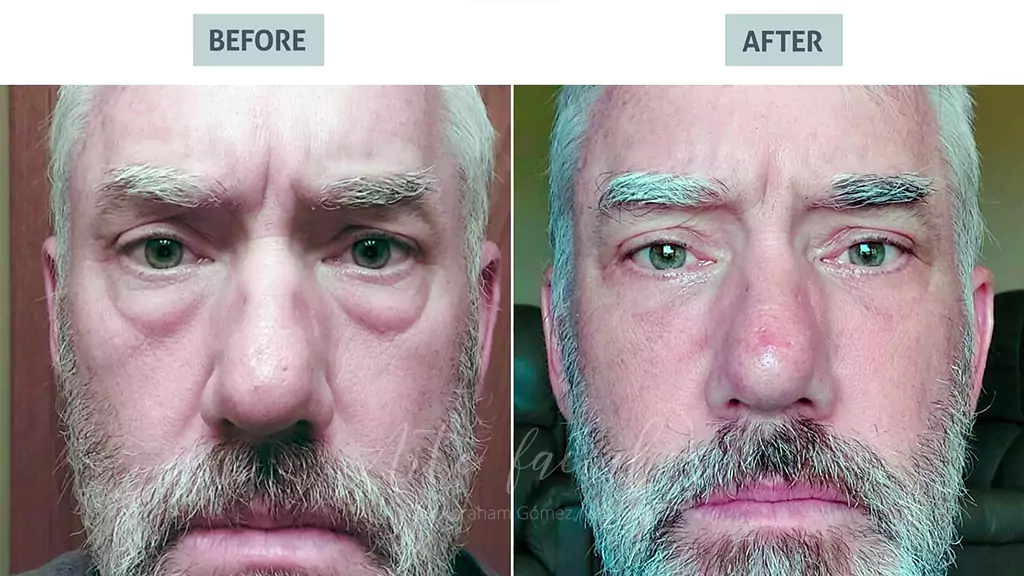Age and genetics make no distinction between genders regarding the presence of eye bags and dark circles. In men, bags can appear as early as the third decade of life, conveying a tired, overworked, and aged appearance. In younger males, this is usually a genetic or, more precisely, anatomical condition. Older men begin to notice the tell-tale signs of aging in the region of their eyes, especially as bags and wrinkles start to show.
Three main issues to address when treating bags under the eyes.
Three factors contribute to the manifestation of under-eye bags in men. A prolapse of orbital fat (fat in the eye socket) through a thin eyelid membrane called the orbital septum manifests as a baggy protrusion under the eyes. These bags hang over a groove of various depths, called the tear trough, that sits close to the nose on the junction between the eyelid and the cheek – the second factor.
A third factor to address surgically is the loss of eyelid tone and decreased skin elasticity due to aging. This factor is more common in patients in the fourth decade and onward, when under-eye wrinkles become more conspicuous. The treating physician must focus on all of these factors to aim for the best cosmetic outcome.
Improving the bags and effacing the tear trough.
To address the bags, the surgeon has two main options. The first is to remove the fatty tissue by resecting it carefully with electrocautery or CO2 laser (fat resection). Another possibly better option is to transpose the orbital fat onto the anterior surface of the maxillary bone (fat transposition).
Fat transposition seems to offer better results, as it helps to obliterate the groove that separates the eyelid and cheek (tear trough), allowing the surgeon to blend this junction and achieve a more natural result. Regardless of the technique, it is imperative to be conservative and to avoid damage to important anatomical structures around the eye.
Treatment of wrinkles under the eyes
There are also a few ways to improve eyelid wrinkles, such as laser skin resurfacing or chemical peels. However, for patients with more pronounced wrinkles, a prudent option is to remove the wrinkles by raising a skin flap. The flap is meticulously tailored, using extreme caution to remove only a small amount of eyelid skin.
Any time skin is removed from the lower eyelid, a tightening procedure of the lateral canthal tendon is required. A canthopexy is often employed to restore eyelid tone and prevent postoperative eyelid retraction.
Expect mild to moderate bruising after surgery to remove under-eye bags
Patients can expect mild to moderate bruising for about a week to two weeks. Fortunately, the recovery after lower eyelid blepharoplasty is not painful. There will be little bruising and only mild swelling two to three weeks after the surgery. Results are best appreciated about five weeks postop when the surgeon can take before and after photos to demonstrate the elimination of the bags, blending of the eyelid-cheek junction, and improvement of eyelid wrinkles.












 |
|